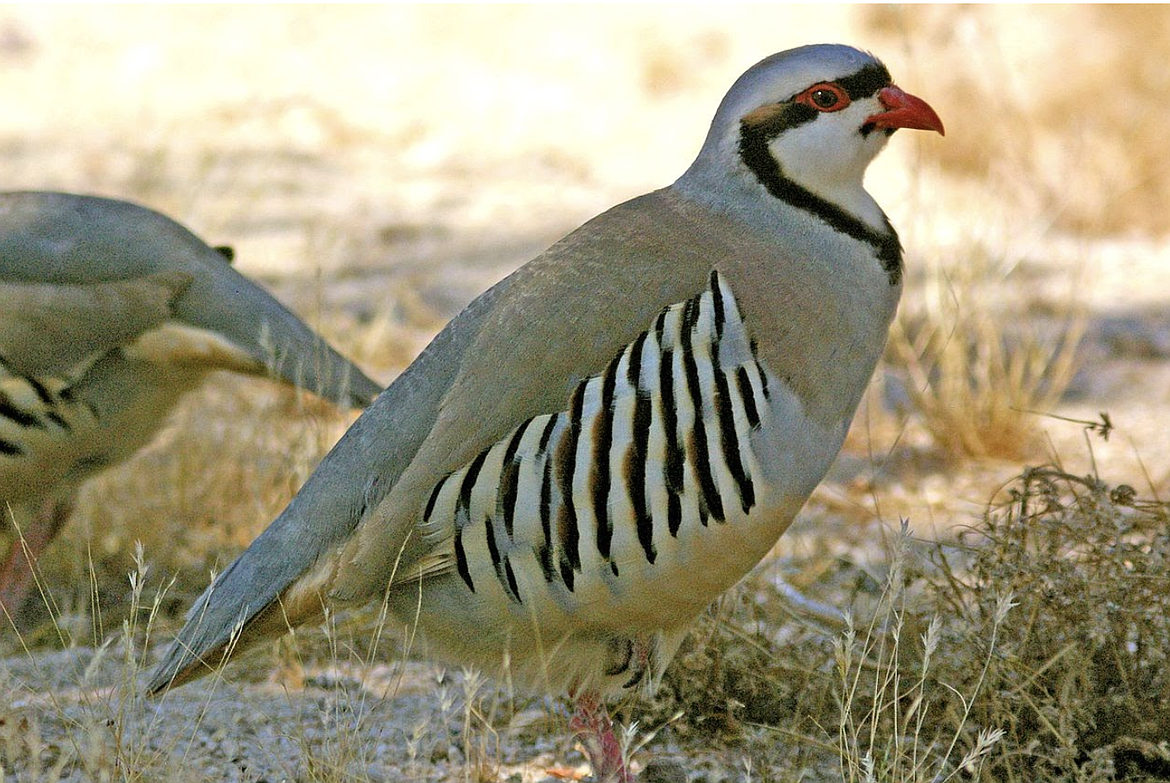Critters of North Idaho: Chukar Partridge
If you’re hiking through the rocky, mountainous slopes of the western United States, you might just hear the distinct call of today’s Idahoan critter: chuck-chuck-chuck … chukar-chukar. No, those aren’t the clucks of an off-pitch chicken. It’s actually a little bird called the chukar partridge, named after its unusual call. These birds are very vocal and can be heard from a great distance away. You’ll probably hear one long before you see it!
The chukar partridge (Alectornis chukar) is a bit larger than its distant cousin, the California quail, weighing between 19 and 27 ounces (538 and 765 grams) and measuring 32 to 35 centimeters (13 to 14 inches) in length. Speaking of family relations, this bird is a member of the pheasant family, Phasianidae. It is closely related to chickens, peacocks, Old-World quail and turkeys. The chukar partridge is distinguished from other members of its family by its sandy brown body with vertical black markings (called barring) along its side, red beak and eyering, and the black band around its face, cheeks and throat.
Despite living in North America, the chukar partridge is not closely related to any birds native to this continent. This is because it itself isn’t native to this continent. These birds are an invasive species from the Middle East, Asia and Europe, brought to North America in 1893 as a game species.
No doubt you’ve heard horror stories about invasive species that devastated the local ecosystem they were introduced to, but the chukar has caused no such trouble. In fact, this species is quite beneficial in some areas it has been released. Chukars introduced to Hawaii have taken up important niches that were once occupied by native Hawaiian birds that have become extinct.
Chukars are not very picky about their diet. Their chicks mostly eat insects, but the adults are herbivorous, though they do consume locusts from time to time. Their diet consists largely of certain types of grasses, seeds, leaves and other foliage. Many of the seeds they consume do not get digested and are passed through the bird unchanged in a little pile of fertilizer. This means that wherever the bird goes wherever it happens to go, it helps disperse the plants much farther than they would be able to on their own. Some scientists suggest chukars might be helpful in restoring plant diversity to degraded ecosystems.
Be sure to spare a thought for our feathery friend, good old “Chuck,” if you ever hear his chuck-chuck-chuck-chukar-chukar in the wilderness.
• • •
animaladventures1314@gmail.com

